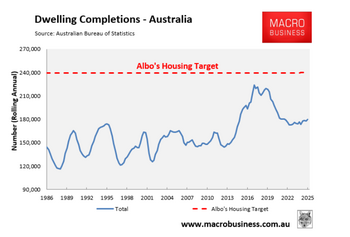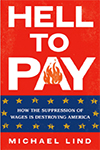
“Business as usual is broken” I’ll say to someone. Their head nods in furious agreement. Whether that head belongs to a property industry professional, a government minister, a senior bureaucrat or a tradie doesn’t seem to matter. The realisation that business as usual is broken is now universally accepted by all except the most ardent lovers of regulatory overreach.
The question then becomes, if it is so broken, why do we keep applying business as usual techniques to solve the problem? Why don’t we discard the things we know are not working, especially the things that are working against us, and adopt a different strategy?
The signs of a broken system are everywhere. Our housing market is the most widely reported failing: median prices in capital cities are now 10 times median household incomes – and still rising. That places us as among the most expensive housing markets in the developed world. Sydney – at 14 times incomes – is second place in the world. Not a prize you want. Even Adelaide – yes Adelaide – at 10.9 times incomes, is in the top 10 least affordable cities in the world, relative to incomes. Most Australian capitals are in the top 10 or 15 globally – ahead of cities like greater metro London, Singapore or a host of US cities with bigger economies and populations.
Bringing new supply into a market at a speed which is remotely close to meeting demand is now a task that is beyond us, using business as usual techniques. Our performance could only be described as miserable and – with the exception of national politicians who keep talking targets as if they will somehow magically be delivered – no well informed person seems remotely hopeful that our supply side mechanisms are up to the task. To use the fad phrase, they are “not fit for purpose.”
One proposed ‘solution’ has been a call for more planners to
cope with the increasing complexity of land use regulation and development
assessment. But so far, the rate of growth in complexity is outpacing the
growth of planners. Jonathan O'Brien of Inflection Points wrote an interesting piece relating the number of planners to the delivery of housing stock.
Read the rest of this piece at The Pulse.
Ross Elliott is a leading industry practitioner with over 35 years' experience in property and urban development across a number of industry sectors. He has held senior roles with the Property Council of Australia as Executive Director, National Chief Operating Officer, and National Executive Director of the Residential Development Council. Ross has been a frequent writer and guest speaker on urban development themes both in Australia and the US. In 2018 he published a piece on Australia in a global study of suburban development by the MIT Center for Advanced Urbanism (Cambridge, Mass.) Ross is also founding director of suburban issues think tank Suburban Futures.
Chart: courtesy The Pulse, data source is Australian Bureau of Statistics.












